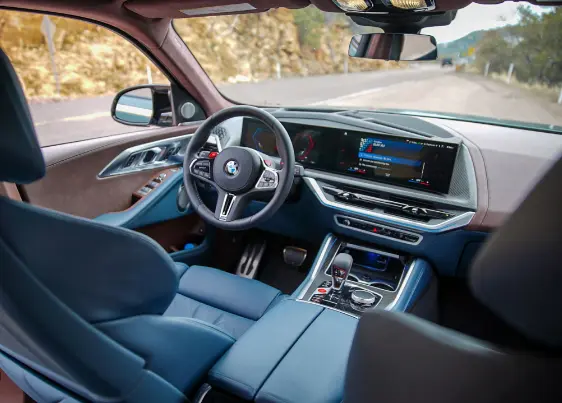When we think about driving, we often focus on the vehicle’s performance, safety features, and the road ahead. However, the interior of your car plays a crucial role in your overall driving experience.
Car manufacturers have increasingly recognized the importance of car interior comfort, incorporating principles from psychology to create spaces that promote relaxation, concentration, and well-being.
In this article, we’ll explore the psychology behind car interior comfort and how it contributes to a more mindful and enjoyable driving experience.
1. The Importance of Comfort
Comfort is more than just a luxury in a car; it’s a fundamental aspect of the driving experience. Uncomfortable seating, poor ergonomics, and unpleasant sensory experiences can lead to distraction and discomfort, compromising both safety and enjoyment.
2. Ergonomics and Well-being
Ergonomics, the study of how people interact with their environments, plays a vital role in car interior design. Well-designed seats, steering wheels, and controls promote comfort, reduce fatigue, and minimize the risk of injury. Proper ergonomics are essential for maintaining focus during long drives.
**3. Psychological Comfort**
Psychological comfort is equally important. A well-thought-out car interior can create a sense of calm and relaxation, enhancing the driving experience. Here’s how psychology comes into play:
**a. Color Psychology:** Colors can influence mood and emotions. Neutral and cool colors like blues and greens can create a soothing atmosphere, while warm colors like reds and oranges can energize and excite. Car interiors often use a combination of colors to create a balanced and pleasant environment.
**b. Ambient Lighting:** Ambient lighting in car interiors allows for customization and can significantly impact mood. Soft, warm lighting can evoke a sense of coziness, while cool lighting can create a more futuristic and modern feel.
**c. Minimalism:** Minimalistic design principles, such as clean lines and uncluttered spaces, contribute to a sense of calm and order. A clutter-free interior can help reduce distractions and promote a mindful driving experience.
**d. Soundscapes:** The soundscape of a car’s interior is crucial for comfort. Effective noise insulation and well-designed audio systems can create a serene environment. Some vehicles even offer customizable soundscapes that mimic natural sounds like flowing water or birdsong, promoting relaxation.
**e. Materials and Textures:** The choice of materials and textures in car interiors can impact tactile comfort. Soft-touch surfaces, quality upholstery, and natural materials like wood or metal can create a sense of luxury and well-being.
**4. Personalization and Control**
Car manufacturers recognize that personalization is essential for creating a comfortable and mindful driving experience. Many modern vehicles offer customizable settings for seats, climate control, lighting, and even the vehicle’s driving characteristics. These personalized settings allow drivers to tailor the car’s interior to their preferences, enhancing comfort and control.
**5. Wellness Features**
Some high-end vehicles now incorporate wellness features into their interiors. This includes air purification systems, in-car aromatherapy, and massage seats. These features are designed to enhance overall well-being during the drive, creating a mindful and rejuvenating experience.
**6. Mindful Driving Practices**
Mindful driving is not just about the physical comfort of the interior but also about practicing mindfulness while on the road. Being present, focused, and aware of your surroundings can significantly improve safety and reduce stress. Car interiors that promote comfort and relaxation can facilitate these mindful driving practices.
**Conclusion: The Art of Mindful Driving**
The psychology of car interior comfort is a delicate balance between aesthetics, ergonomics, and psychology. A well-designed interior can create a mindful driving experience where you are fully present, relaxed, and focused on the road. As car manufacturers continue to integrate psychological principles into their designs, drivers can expect a future where car interiors enhance not only comfort but also overall well-being. By understanding the psychology of car interior comfort, we can all strive to make our journeys safer, more enjoyable, and more mindful.



good